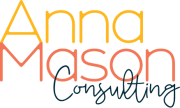Anna’s Top Four Workplace Trends of 2023

Coasting culture. Quiet quitting. Rage applying. Career cushioning. These were some of the buzziest buzzwords on TikTok when it comes to workplace trends in 2023. (You can check out the link if you’d like these phrases decoded. And for the record, I believe most of those trends are actually symptoms of common problems companies encounter. I’ll dig into that later in this post.)
As I assessed my own experiences with clients over the past year, there were cumulative themes that emerged around what is most challenging to employees, leaders, and companies, and what is going well for them. Here are four universal trends I’ve observed:
1. Middle managers are struggling. If you follow my work, you’ll recognize this theme. That’s because it is something that challenges almost all of my clients at some point or another along their growth continuum. Middle managers are the fulcrum of an organization – everything hinges on them. They are often promoted out of their roles as direct workers because they excel at producing results.
But no one teaches them how to lead and manage people (especially people who may recently have been their peers), so they struggle to carry the company message from executive leadership and hold their own teams accountable. Middle managers are stressed and burned out. A lot of them are even looking for new jobs. Because of their position in the middle, everything they do impacts upper management and the employees who report to them. When a middle manager leaves a company, they often take a vast amount of institutional knowledge and know-how with them. They are challenging roles to replace.
This year, more and more companies have realized the importance of this critical layer of their org chart, and decided to invest in it. Supporting managers with leadership development training, communication skill-building, and ongoing coaching positions them for success in their roles and positive results in the company.
2. Hybrid work models present new challenges. The COVID pandemic and its ripple effect on how we work are still, well, rippling. Some companies have abandoned the brick-and-mortar environment entirely, opting for fully remote workforces. Others dabbled in remote work and are now pulling everyone back into the office full-time. Still others are grappling with making decisions and creating policies about who can work from home and when.
Here’s my takeaway: It’s less about where your team works and more about how your company’s culture supports that structure and empowers individuals and teams to do their best work. Communication, clear expectations, and innovative approaches to teamwork are critical no matter where employees physically work, but they look different for fully remote versus in-office staff. Emotional intelligence also plays an important part in empowering teams to work most effectively with each other. Before making a policy change, employees must be in the loop and positioned for success. Make sure leaders know how to manage change and communicate expectations effectively and continuously.
3. Tight labor markets lead to creative hiring and benefits strategies. The national unemployment rate is still less than 4 percent. In Iowa, where I live, the rate is 2.6 percent, at the time I’m writing this. That’s the 11th lowest unemployment rate in the country. Companies are competing for workers, “help wanted” signs are in every restaurant, retail, and manufacturing center. Employers are realizing that posting a job online or putting up a sign, or even utilizing a recruiter might not be enough to find the talent they need. And when they do make a hire, it’s often out of desperation: to get someone — anyone — into the role without thoroughly assessing if that person is the right fit. That’s a mistake that will exacerbate the problem, not solve it.
I’ve seen companies do some really great work this year in terms of transforming their hiring and overall support and benefit processes. Organizations are providing not just training, but language translation, childcare, transportation, and other supports that make it possible for more populations to participate in the workforce. Others are advertising hours that are more appealing to parents.
All of these wraparound packages help to support the workforce, but I believe the best way to ensure a good fit is to hire the right person for the right job from the beginning. It’s not guesswork. There are science-backed tools that help companies through this process. Managing, hiring, and team building are so much easier when you have behavioral information to guide you. The Predictive Index suite of tools is one proven method for streamlining the hiring process and reducing turnover.
4. Employee connection and wellness, including mental health, is more important than ever. But employers don’t know what to do about it. All those TikTok trends I mentioned earlier? They are difficult to measure and track, because they usually refer to an employee’s state of mind, and not an actual action. I believe they all relate back to employee wellbeing. “Bare minimum Mondays” and “quiet quitting” are symptoms of something that is not new: employees who are not engaged at work. They don’t feel seen, valued, or plugged in to the mission and the team. The COVID pandemic exacerbated these workplace stressors. (I’m not referring here to personal mental health challenges, such as depression and anxiety, which also increased during and after the pandemic. These are issues that necessitate diagnosis and treatment by a mental health professional.)
The good news is that we have proven solutions for understanding and connecting people and teams. Emotional intelligence (EI) skills are critical for building relationships and teams, resolving conflict, solving problems, and building resilience. EI is at the heart of how we all operate at work: emotional and social skills that influence the way we perceive and express ourselves, cope with challenges, and maintain relationships. When properly nurtured, no team member feels unheard or undervalued. Support and respect are multidirectional: from leadership to staff, and vice versa.
While each new year seems to present new challenges (and buzzy new phrases) in the workplace, many of these issues are not actually unprecedented. They are evolving manifestations of the same maladies that organizations have faced for years. In 2024, resolve to invest in solutions.

